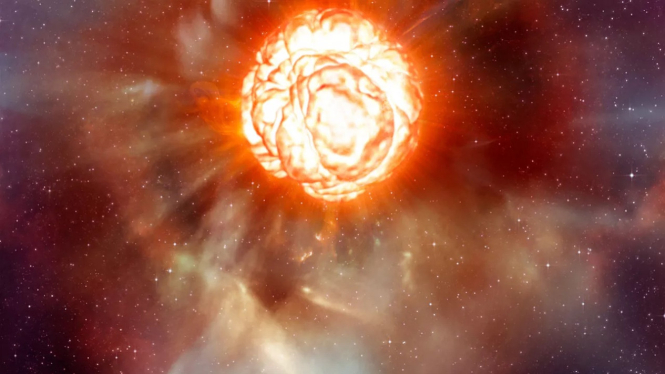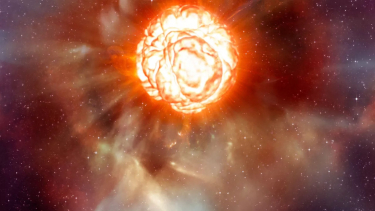- ESO
VIVA – The red Supergiant Betelgeuse continues to experience feverish activity after a coronal mass ejection of 400 billion times that of our sun in 2019.
After the Great Dimming four years ago, scientists have detected a sudden sharp increase in luminosity being emitted by the red giant Betelgeuse, with the star sitting at 142% of its normal brightness level.
Observations of Betelgeuse over the last 200 years have proved that the star has been periodically changing brightness, with astronomers making note of two distinct brightness cycles, the longest of which lasted over a 5.9-year cycle and a 400-day cycle.
Betelgeuse, the largest red giant star of this type known to us, was usually the 10th brightest star in the sky. This year, however, Betelgeuse became the 7th brightest star. In April, officials detected a peak brightness reading of 156%.
Ledakan Supernova.
- space.com
"One of the coolest things about Betelgeuse is that we’re watching the final stages of big star evolution play out almost in real-time for us, which we’ve never really been able to study in this much depth before," an astrophysicist at Swinburne University of Technology in Australia, Sara Webb stated.
Officials have underscored that Betelgeuse is hardly on the cusp of turning into a supernova, with the red giant's brightness likely to return to normal by the end of the decade.
Officials believe the aftereffects of the Great Dimming were so profound that it's what's likely causing the star to temporarily experience a spike in cosmic brilliance.
The intense dimming allowed scientists to see the star expel an incredible mass of material, firstly causing its upper layers to change dramatically and secondly, allowing the material to cool in space and turn into a cloud of dust that obscured the star from researchers' view.
The event saw the star's brightness plummet by nearly 25 percent. But officials have underlined that the Betelgeuse supernova may be tens or even hundreds of thousands of years away.



























